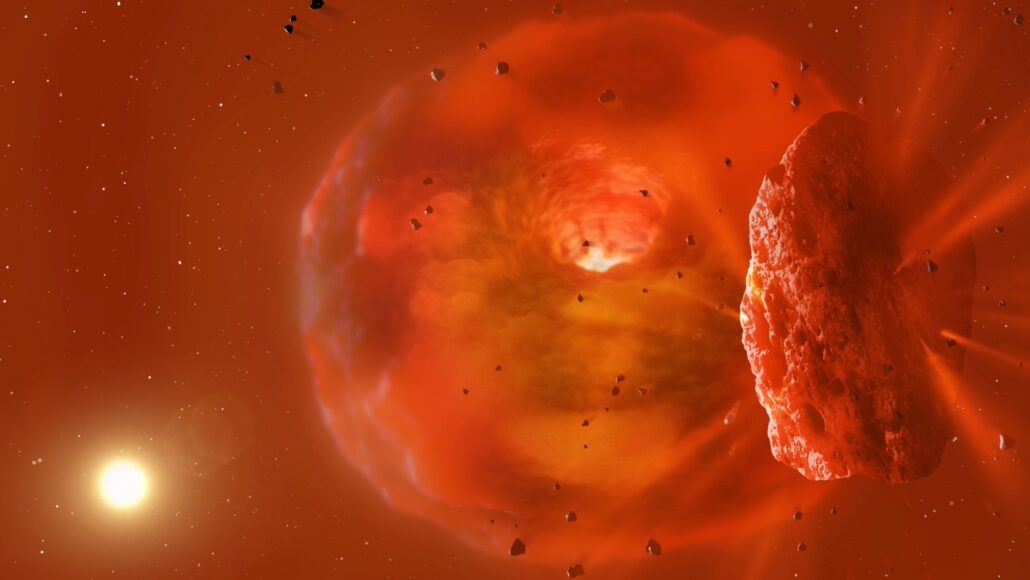Questions for ‘In a first, astronomers spot the aftermath of an exoplanet smashup’

The collision of two exoplanets appears to have left behind a donut-shaped cloud of vaporized rock and water (illustrated). Such a plume would seem to explain an infrared glow visible to telescopes.
Mark Garlick
Share this:
- Share via email (Opens in new window) Email
- Click to share on Facebook (Opens in new window) Facebook
- Click to share on X (Opens in new window) X
- Click to share on Pinterest (Opens in new window) Pinterest
- Click to share on Reddit (Opens in new window) Reddit
- Share to Google Classroom (Opens in new window) Google Classroom
- Click to print (Opens in new window) Print
To accompany ‘In a first, astronomers spot the aftermath of an exoplanet smashup‘
SCIENCE
Before Reading:
- Watch this video and explain what happens in the animation. (Ignore the graphs on the righthand side for now.)
- The two graphs on the righthand side of the video show how two kinds of light — infrared and visible light — would appear to us from Earth. Watch the video again and focus on the change in visible light. Notice that it remains consistent until a certain point. What causes the dip in visible light?
- Now watch the video yet again, this time focusing on the infrared light graph. What event causes the spike in infrared light?
- At the point when visible light dips, what’s happening with the infrared light?
- Imagine you are on a distant exoplanet looking at our sun through a high-powered telescope. To you it looks like a bright star. Your telescope can detect very faint dips in the sun’s brightness. You notice these dips occur regularly, almost as though something around the star occasionally blocks the light. What is a possible explanation for these dips in brightness? If you measured the frequency and duration of these dips, what might you infer from that data?
During Reading:
- How many light-years away from Earth did the collision of exoplanets described in this article occur?
- Scientists have discovered evidence of exoplanet collisions before. What about this particular observation makes it unique?
- What was Matthew Kenworthy searching for when he made his surprising discovery? What type of data would have indicated the presence of such objects?
- What first caught Kenworthy’s eye about the star ASASSN-21qj? Upon further inspection, Kenworthy noticed the something unusual about the visible and infrared light from the star. Describe what he observed.
- What did scientists learn in studying the data from NASA’s WISE telescope?
- What “single event” might explain the periodic blocking of ASASSN-21qj’s visible light?
- What is a second potential explanation for the data that involves two separate events?
After Reading:
- In this article, Philip Carter says, “As far as I’m aware, no one’s claimed this before.” To what claim is Carter referring? Describe the evidence the scientists used to support their claim.
- In this study, two potential explanations could both explain the data. Kenworthy describes one of these as being “really, really, really unlikely.” What was it about that explanation that made Kenworthy find it so unlikely? To what extent do you agree or disagree with his conclusion? Explain your answer.
- Consider the explanation that scientists in this article consider most probable. What might scientists do to increase their confidence in this explanation? What additional data might they need or seek?